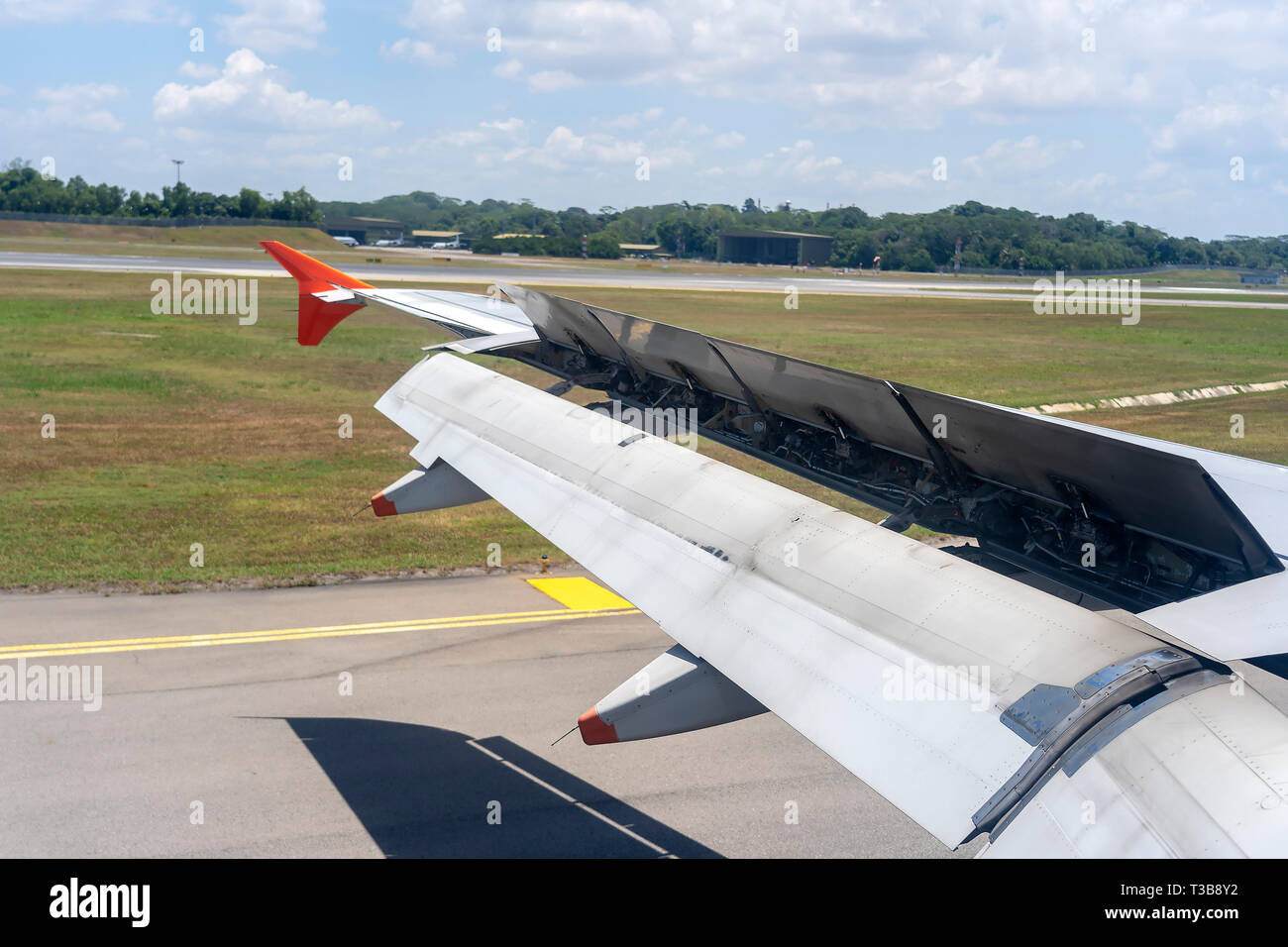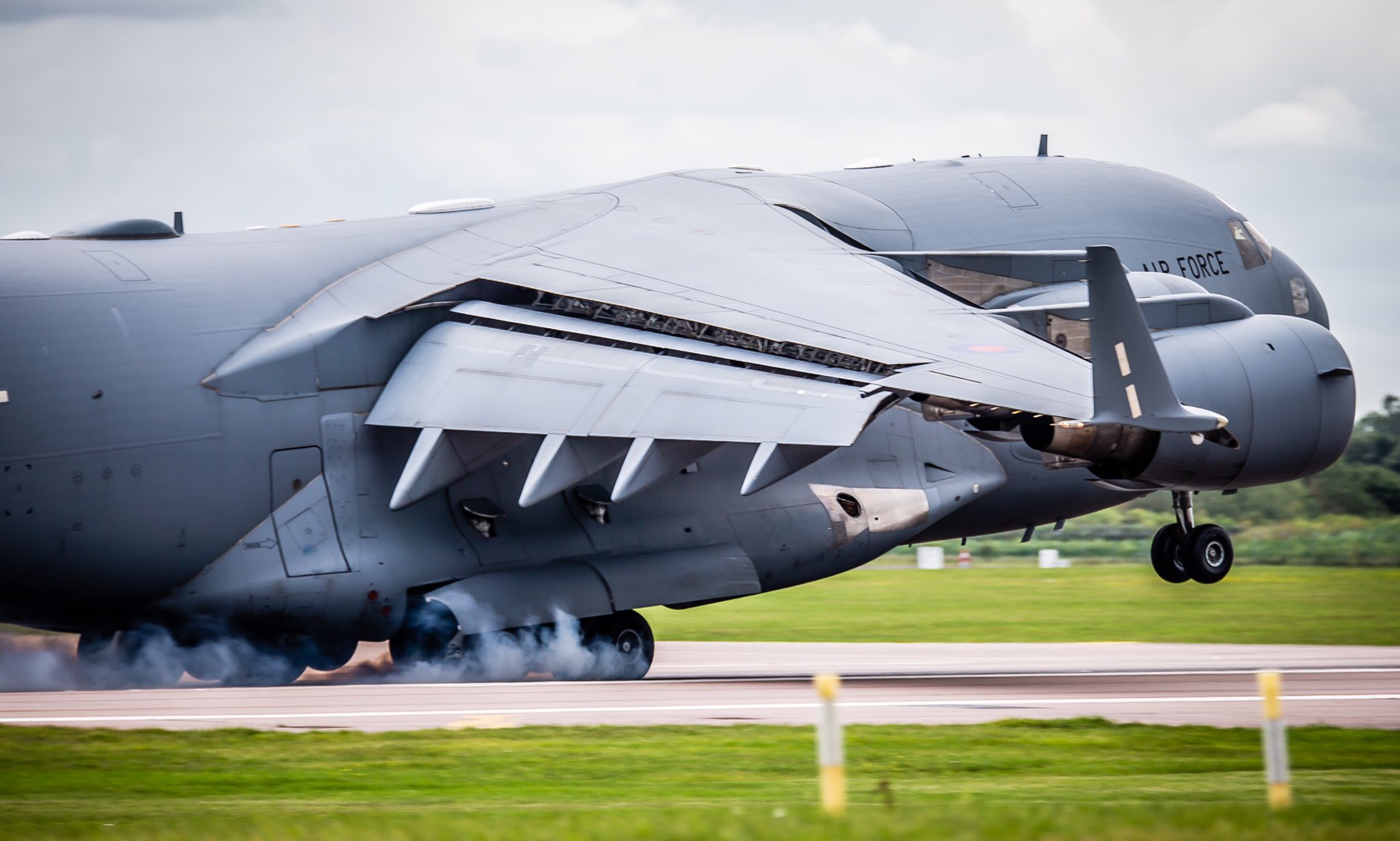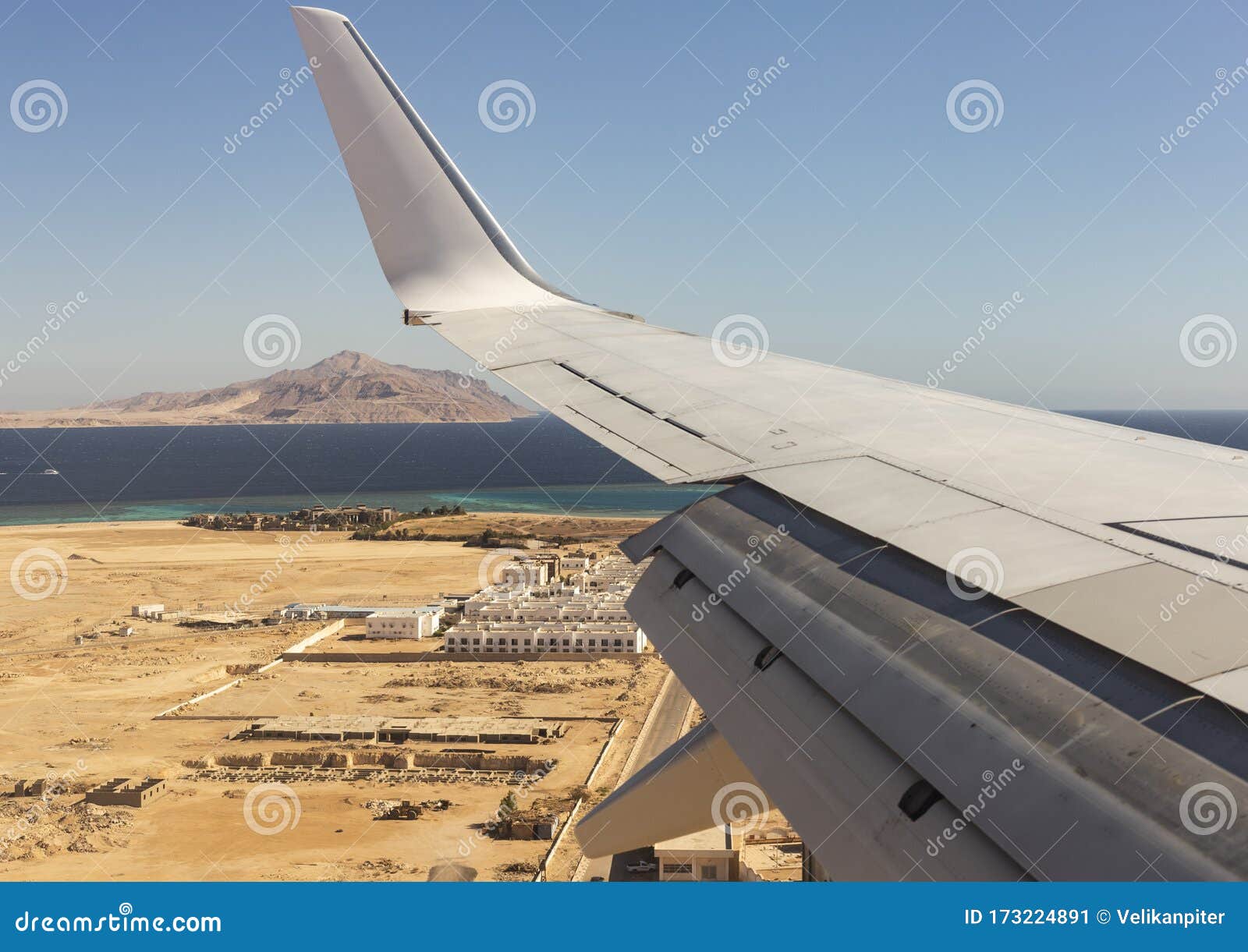Aircraft Spoilers - The next stop for the spoiler is one of two CNC machines, supplied by CMS (Zogno, Italy), where the outside profile of the spoiler is trimmed and holes are drilled for assembly. Boyd notes that the trim operation and hold-drilling performed here varies by spoiler type, and like everywhere else along this production line, machine operation is guided by the MES.
Aircraft wings are a feat of modern engineering. Without them, flight simply couldn’t take place. There are actually many parts to a wing. Different aircraft have different shapes and styles of the wing, but the general principle is the same. Today we will talk you through parts of a wing and give a detailed explanation of some technical terms too!
Aircraft Spoilers

Spirit worked quickly to turn the Airbus spoiler design into a manufacturing demonstrator that, ultimately, would successfully prove the concept. With a demonstrator in hand, what followed then was not only development of a high-rate, high-efficiency RTM process, but of a composites manufacturing concept that is emblematic of Spirit’s solutions-focused approach in particular, and commercial aerospace’s path forward in general.
Into The Press Demolding
Step 9. After the top half of the spoiler mold is secured to the bottom half, the entire tool is transferred to one of seven Coexpair RTM presses that Spirit has installed. The resin injected is Hexcel’s RTM6 single-component epoxy. Source | CW
A fully assembled mold is now ready for the RTM process. Through the MES the mold is transferred along a metallic conveyor out of the cleanroom, through a red retractable door, and toward the RTM presses. The conveyor system is designed such that the MES can decide which mold will go to which press, and then automatically route it there. Inside a large, fenced enclosure, Spirit has installed seven RTM presses, supplied by Coexpair (Namur, Belgium). Next to each press is a resin pump system, also supplied by Coexpair. The mold travels along the conveyor and directly into the open press.
Fabrication of an A320 spoiler starts in a 1000-square-meter, Class 9 cleanroom that, at full rate, will be staffed each shift with six operators managing four processes: cutting, kitting, preforming and preform assembly. Operators are primarily responsible for moving material from one station to the next, and for assembly of preforms into the mold.
If you have ever sat over a wing during a flight, you’ll have noticed a fair amount of movement of different panels and parts of the wing. Each of these moving parts has a name and performs a specific function. They are called flight control surfaces.

Hands-Free Cutting Kitting Preforming
Ailerons move up and down to change the chord line at the end of each wing. When the cord line is altered, this changes the airflow going over the wing. When an aileron is up, its corresponding wing is pulled down.
However difficult the short-term outlook is and might be for the aerospace industry, the almost 8 billion people who call Earth home will not remain grounded forever, which means commercial air travel will return. Which means that the dynamics and forces governing the aerospace supply chain will return in some form or another. Estimates, as of this writing in mid-May, suggest a 3-5-year recovery for passenger air travel, with demand for single-aisle aircraft leading twin-aisle aircraft design.
Taylor Boyd, R&D manager in Prestwick, led the team that spent the last three years on Spirit’s effort to turn the company’s RTM manufacturing concept into reality. It became his team’s job to acquire, develop and assemble all of the hardware, software and operators who would work in concert to convert raw material on the front end to fully assembled, tested and painted spoilers on the back end. Boyd says the effort was demanding but rewarding, and a departure from the norm for the Prestwick facility — particularly the integration of automation.
The term speed brake is used interchangeably by some with spoilers, but they are different devices. A brake is a device used to add parasite drag–it doesn’t affect the lift made by the wing very much.
Flight Control Surfaces
The mold leaves the RTM press on the same conveyor on which it was delivered, but now is routed by the MES to the next enclosure, where mold lid separation is performed and the spoiler continues to cool to room temperature. Next stop is the demolding area, where the now cooled spoiler is removed from the mold and mandrels are separated. Molds are prepared for cleaning; mandrels are loaded onto one of several turntables that stores each mandrel vertically. Boyd says these were designed to allow operators to easily access each mandrel in a configuration that maximizes storage efficiency.
When the pilot activates the spoilers, the plates flip up into the air stream. The flow over the wing is disturbed by the spoiler, the drag of the wing is increased, and the lift is decreased. Spoilers can be used to "dump" lift and make the airplane descend; or they can be used to slow the airplane down as it prepares to land. When the airplane lands on the runway, the pilot usually brings up the spoilers to kill the lift, keep the plane on the ground, and make the brakes work more efficiently. The friction force between the tires and the runway depends on the "normal" force, which is the weight minus the lift. The lower the lift, the better the brakes work. The additional drag of the spoilers also slows the plane down.

What the Right Honourable Sturgeon and few people in attendance at that ribbon-cutting could anticipate was the tumult and chaos about to be visited upon the global economy by the coronavirus pandemic. Indeed, on that Feb. 28, the commercial aerospace industry was still a few weeks away from a nearly total collapse in passenger air travel, and the attendant plunge in demand for new aircraft that would follow — not to mention aircraft already in service.
Indeed, at full rate production, this line will produce primary aerospace structures at a pace — with quality and consistency — heretofore unseen in aerocomposites manufacturing. At a rate of 65 shipsets per month, which would include Airbus’s new A321XLR, the Spirit line will produce almost 6,500 spoilers a year. At a theoretical rate of 100 shipsets per month, that number jumps to 10,000.
The Future The Elephant In The Room
The wing spar is crucial to the structural integrity of the wing. You normally won’t see the spar, as it forms the internal ‘backbone’ of an airplane wing. They are usually extremely strong, and in some cases, are designed to flex to allow for a smoother ride in turbulence.
On the figure, the airplane's right wing spoiler is deployed, while the left wing spoiler is stored flat against the wing surface (as viewed from the rear of the airplane). The flow over the right wing will be disturbed by the spoiler, the drag of this wing will be increased, and the lift will decrease relative to the left wing. The lift force (F) is applied at the center of pressure of the segment of the wing containing the spoiler. This location is some distance (L) from the aircraft center of gravity which creates a torque
Moreover, this is a product and manufacturing line that is destined to live on beyond the A320 and beyond the spoiler structure itself. Airbus’ Latto, at that Feb. 28 ceremony, said that Airbus’s and Spirit’s work re-imagining and industrializing the A320 spoiler has given the product new life: “We have future-proofed this spoiler to give us flexibility for its use in other future programs.” Airbus’ Smith notes that the work to industrialize and automate the RTM spoiler is the first of many key steps to come. “The spoiler offers a relatively simple structure to prove the concepts and benefits for more complex and demanding structures, such as re-thinking of wing tips devices, wing skins and high-curvature fairings. In a high-rate, low-cost environment — in aerospace terms — the more integration and modular assemblies we can do, the better.”
Once Airbus made the decision to update the spoilers, conducted the trade studies and subsequent materials and process (M&P) development, it then needed a partner to develop the manufacturing processes to fabricate them. For this Airbus, in mid-2017, turned to one of its longtime suppliers, Spirit AeroSystems (Wichita, Kan., U.S.). More specifically, it turned to Spirit AeroSystems (Europe), the company’s R&D and manufacturing campus in Prestwick, U.K., located on the western coast of Scotland about 75 miles southwest of Edinburgh. The sprawling Prestwick campus, adjacent to the Glasgow Prestwick Airport, was founded in 1935 as Scottish Aviation Ltd., and later became BAE Systems Aerostructures. Spirit then acquired the facilities in 2006.
Enter Spirit Aerosystems
You can download your own copy of this simulator for use off line. The program is provided as Spoilrol.zip. You must save this file on your hard drive and "Extract" the necessary files from Spoilrol.zip. Click on "Rolsview.html" to launch your browser and load the program.
Imagine designing an airliner that needs to operate over a wide variety of airspeeds safely. The plane will need to handle well during departures and approaches, flying somewhere around 150 knots. It will also need to fly well when operating at altitude at over 500 knots. The flight controls are going to need to change a little for the different operating envelopes.
Step 8. An operator stands at a workbench before the lower half of an A320 spoiler RTM mold, prior to lower skin, spars and upper skin preform loading. Each spoiler variation has three aluminum molds. Source | CW
Boyd says preform assembly and mold loading represents the most labor-intensive step in a spoiler manufacturing line that uses remarkably little labor at all. Here, operators collect upper skin, lower skin and spar preforms sent from the warehouse by the MES and deliver them to one of two assembly stations. Each station consists of a metallic table, arrayed with fixtures and clamps. On this table and into the fixtures operators place a series of black aluminum mandrels that, when assembled together, will hold and position spar preforms inside the spoiler. Once the mandrels are assembled, they are then transferred to a mandrel cassette, a red metallic frame that holds the mandrels in their assembled configuration, but presents them on edge. This allows the operator to easily and quickly install preforms and adjust their position on each mandrel.
How Do Airplane Spoilers Work?
You can download your own copy of this simulator for use off line. The program is provided as Spoil.zip. You must save this file on your hard drive and "Extract" the necessary files from Spoil.zip. Click on "Spoilview.html" to launch your browser and load the program.
On the other hand, a spoiler is designed to stall a specific part of the wing, thereby significantly reducing the lift it makes. It adds drag too, but it primarily dumps lift. Since it does disrupt lift and create drag, a normal spoiler might be considered both a lift spoiler and a drag-producing brake.

The MES is a product of ThyssenKrupp (Essen, Germany), the systems integrator that provided some of the manufacturing hardware and material handling equipment Spirit uses. Boyd says the software is off-the-shelf from ThyssenKrupp, but it’s been customized for the spoiler production line to provide Industry 4.0 capability. The MES was written not just to track material status and manufacturing progress throughout the plant, but to guide and prompt operator activity through every step — when to move material from point to point, when to load machines, when to unload machines, etc. “We don’t want an operator to make a move here unless the MES says to make a move,” Boyd notes. Moreover, he says, MES provides full data traceability, which allows Spirit to capture and see full M&P information, from the raw material as it comes in the door to the finished spoiler as it goes out the door.
Spoilers are devices on the wing that “spoil,” or reduce, the lift being made. They can be used in several ways, both in flight and on the ground. Flight spoilers add drag to help slow the plane down during flight, and ground spoilers are used during landing to help stop the plane.
What Are Slats?
Slats are also high lift devices. But, unlike flaps, they are located on the leading edge of the aircraft wing. Like flaps, slats move symmetrically and allow the aircraft to fly slower. Not all aircraft have slats, and you’ll usually find them on larger commercial aircraft.
Ground spoilers solve this problem by disrupting the wing’s lift so severely that the weight is transferred quickly to the wheels and brakes. They work in concert with the plane’s wheel brakes and engine thrust reversers to stop the plane.
Aleks is a Boldmethod co-founder and technical director. He's worked in safety and operations in the airline industry, and was a flight instructor and course manager for the University of North Dakota. You can reach him at aleks@boldmethod.com.
From a Spirit AeroSystems perspective, the spoiler production line demonstrates not just the cost-effectiveness of new technology, but how composites can be matured and leveraged for application in next-generation aircraft. And the Prestwick campus in particular is banking on out-of-autoclave (OOA) M&P as a significant competitive advantage in the aerocomposites supply chain. “This program is clearly a significant milestone in our out-of-autoclave journey,” Spirit’s Sean Black says. “But it was enabled by several things that are critical to the company going forward: automation, software, support from academia and government support.”

Alex Udris
Once Spirit was selected as the manufacturing partner, Black says, “Spirit embarked on the journey of full process optimization of the RTM spoiler design.” This included another trade study and, ultimately, design optimization. The design and manufacturing factors to be considered for the spoiler are considerable: Large mechanical loads, cantilevered structure, drop-in replacement, dimensional conformance, cost-effectiveness, high-rate manufacture, sustainability. Spirit took six months and conducted its own trade study, evaluating metal and composite options, including a variety of composites manufacturing processes — in and out of autoclave. “This project had high visibility and focus within the Airbus system,” Pinner notes. “We took a focused, end-to-end, design-to-cost approach.”
Ian Latto, project leader spoilers for Airbus at the company’s Bristol, U.K., location, says the spoilers on the A320 are one of the few wing components that had not needed to be redesigned since the plane’s 1987 debut. However, as Airbus considered higher build rates for the A320 family, a redesign of the spoilers was necessary to realize the cost and rate capabilities of new tech- nologies. Further, as Airbus looked to the future, it knew it had to migrate spoiler manufacture away from hand layup and toward “a highly automated, low-variation, high-quality manufacturing process,” says Latto.
Flaps often have several different settings. These settings can be altered based on the phase of flight and desired flight characteristics. The larger stages of flap, often called ‘drag flap,’ are used to slow the aircraft down to final approach speed.
Back on the tables, as plies are cut, the ABB robot places them on a stacking station at the end of the row of tables. Here, a video camera performs a quick inspection of each ply. The plies are then sorted and kitted according to their end use — skins, spars, ribs — and then spot welded together, activating a binder in the NCF. Complete kits are next moved by the ABB robot to a stacking plate, which is, basically, a steel tray. On this tray is a QR code that specifies the type of kit it holds, whether upper skin, lower skin, spar or rib. The QR code is scanned by the robot, which logs the kit with a manufacturing execution system (MES), the software that drives the entire spoiler production line
How Flaps Work
spoilers aircraft function, spoilerons on aircraft, aircraft spoilers vs ailerons, rear wings for cars, flight spoilers, flight spoilers vs ground spoilers, wing spoilers airplane, spoilers vs speed brakes